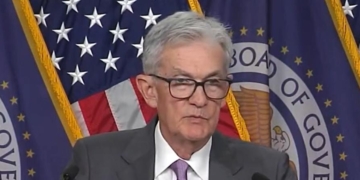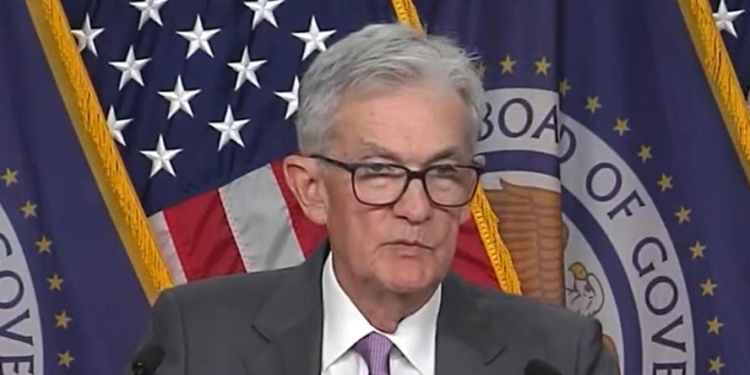The Federal Reserve announced Wednesday that it would lower its federal funds rate target range by 0.50% in a move that could bolster economic growth and, consequently, Vice President Kamala Harris’ election chances.
The Fed’s decision comes after inflation cooled to 2.5% last month and job growth fell below economists’ expectations in both July and August. The rate cut is the first change in Fed policy since July 2023, with the Federal Open Market Committee (FOMC) previously holding rates at a 23-year high range of 5.25% and 5.50% for eight straight meetings.
“In light of the progress on inflation and the balance of risks, the Committee decided to lower the target range for the federal funds rate by 1/2 percentage point to 4-3/4 to 5 percent,” the FOMC wrote in its announcement. “In considering additional adjustments to the target range for the federal funds rate, the Committee will carefully assess incoming data, the evolving outlook, and the balance of risks.”
The rate cut will lower the cost of borrowing, which could boost gross domestic product (GDP) by freeing up capital for both businesses and consumers. Expectations of an elevated GDP could then also bolster the stock market, as it did when the Fed signaled in December 2023 that it would reduce rates this year, and thus could boost Harris’ chances of winning the presidency as certain economic conditions improve.
A positive performance by the S&P 500 index in the three months prior to election day has resulted in the party in power winning 83% of the time since 1928, and more than 80% of registered voters say the economy will have a strong influence on who they select in 2024.
The interest rate cut met expectations, with 59% of interest rate traders predicting a 0.50% cut as of Wednesday before the announcement, while the remaining 41% predicted a 0.25% reduction, according to the CME Group’s FedWatch Tool.
The cut also follows the announcement of a downward revision of more than 800,000 jobs for the period between April 2023 and March 2024, with E.J. Antoni, a research fellow at the Heritage Foundation’s Grover M. Hermann Center for the Federal Budget, previously telling the DCNF that conditions were “very similar to the onset of the Great Recession,” when the Bureau of Labor Statistics had difficulty monitoring jobs data due to a rapid deterioration of economic conditions, resulting in frequent revisions.
The lower cost of credit could also help increase hiring as companies gain access to more capital and could reduce a recent trend of surging credit card and auto loan defaults. The U.S. is currently experiencing its highest rate of credit card delinquencies in over a decade, with nearly 10% of credit card balances becoming past due in the last year, according to the Federal Reserve Bank of New York (FRBNY).
Total household debt rose by $109 billion in the second quarter of 2024, reaching $17.8 trillion, according to FRBNY.
All content created by the Daily Caller News Foundation, an independent and nonpartisan newswire service, is available without charge to any legitimate news publisher that can provide a large audience. All republished articles must include our logo, our reporter’s byline and their DCNF affiliation. For any questions about our guidelines or partnering with us, please contact [email protected].


























